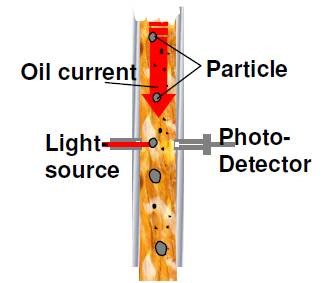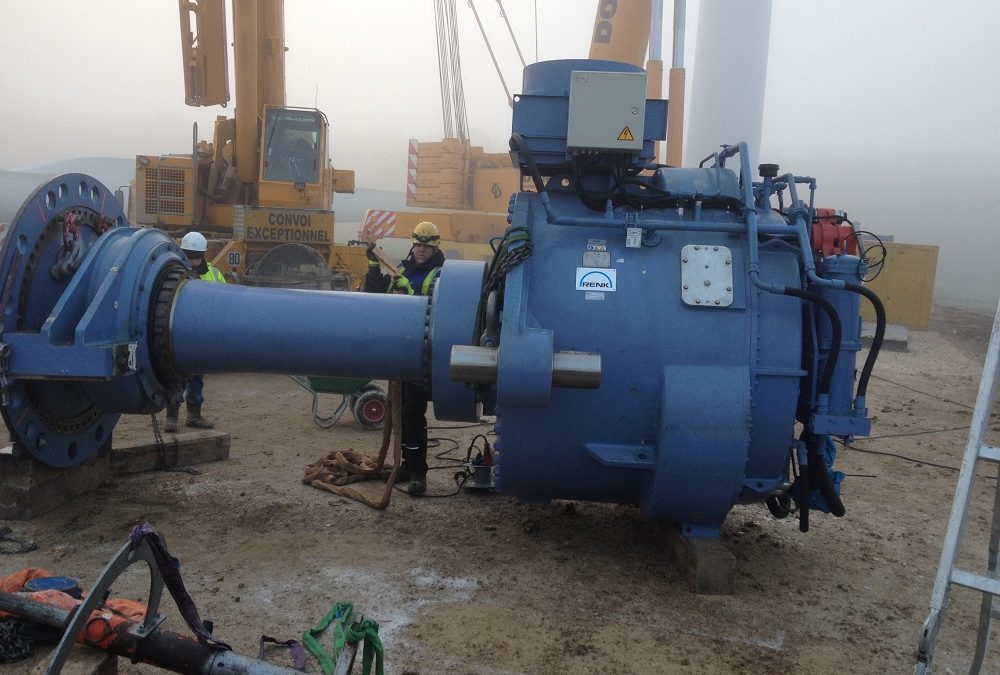A gearbox is one of the most critical components in a wind turbine. The price of gearboxes, as well as the difficulties involved in having them replaced, makes their maintenance a priority for asset managers.
Oil analysis
A gearbox will generally hold between 250 and 300 litres of oil. The role oil has to play in the gearbox is two-fold; it helps accommodate the speed between gears and evacuates some of the heat produced from the friction between gears and foreign objects.
Analysing the oil inside a gearbox is the simplest and most effective way to evaluate the state of a gearbox. Usually the following are analysed once or twice per year:
- The quantity of water in the gearbox’s oil. Friction between gears creates heat that can evaporate the water in the oil. Water can also quickly oxidize the gears and bearings;
- The neutralization index, a PH measure which tests the acidity of the oil. This acidity can come from water or the presence of contaminants;
- Oil condition. This test evaluates the cleanness and viscosity of the oil. Metallic parts can alter the viscosity of the oil and can be detected using a spectrometer. The higher the metallic content in the oil, the quicker the viscosity and the lubrification power of the oil will decrease. The viscosity is measured in mm²/s.
Greensolver strongly advises asset owners conduct tests on gearbox oil at least once a year, and to monitor the results over time, as changes in results from one test to another can be a strong indicator of gearbox conditions.
Particle counting
As well as the in-depth analysis outlined above, the state of a gearbox’s oil can also be tested by measuring the number of foreign particles. This is not an alternative to longer-term testing, but can mean that issues are raised more quickly than when relying solely on the results of an annual or bi-annual oil analysis.
There are two main methods of particle counting:
- Optical particle counting: this gives the total number of foreign particles, sorting them in terms of their size, without specifying their type, be that metallic, organic or otherwise. Usually the sizes considered are 4µm, 6µm, 10µm, 14µm, 21µm, 38µm, 70µ et 100µm. This test uses 50 to 80mL of oil scanned by a laser that uses an optical sensor to detect the particles. This is a quantitative test that gives an idea about the viscosity of the oil and its lubricant power.

- Inductive particle counting: This test is based on the separation of the ferromagnetic particles (~200 µm) and non-ferromagnetic particles, which are usually larger (>400µm). The oil is sifted through a tilted tube subject to a magnetic field, which attracts the ferromagnetic particles. Particles can be counted by measuring the variation of the magnetic field. Usually this test gives 2 empirical figures for the ferromagnetic and non-ferromagnetic particles between 0 and 180. If the ratio of these two figures is above 2:1, this indicates significant wear and tear within the gearbox.

Even though new turbines are usually equipped with these systems, Greensolver strongly advises asset owners to double check for their presence. If they are not there, these systems can be easily installed for a few hundred euros. Particle counting provides a useful complement to oil analysis and CMS monitoring, and can save asset owners time and money in the long-run, highlighting issues with temperamental gearboxes.


